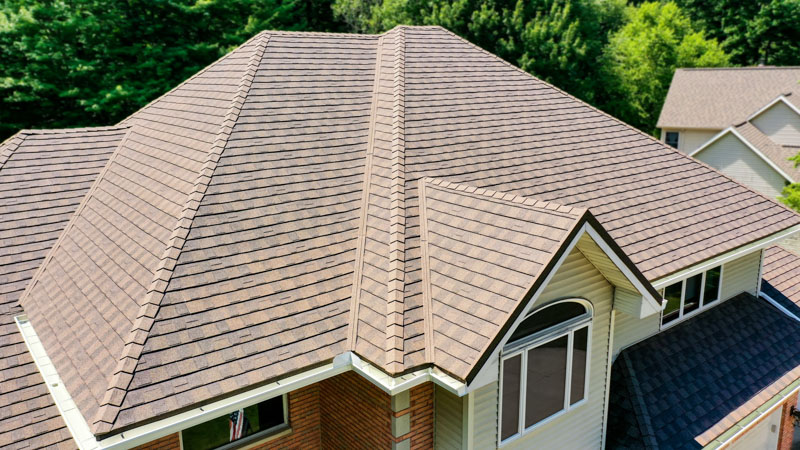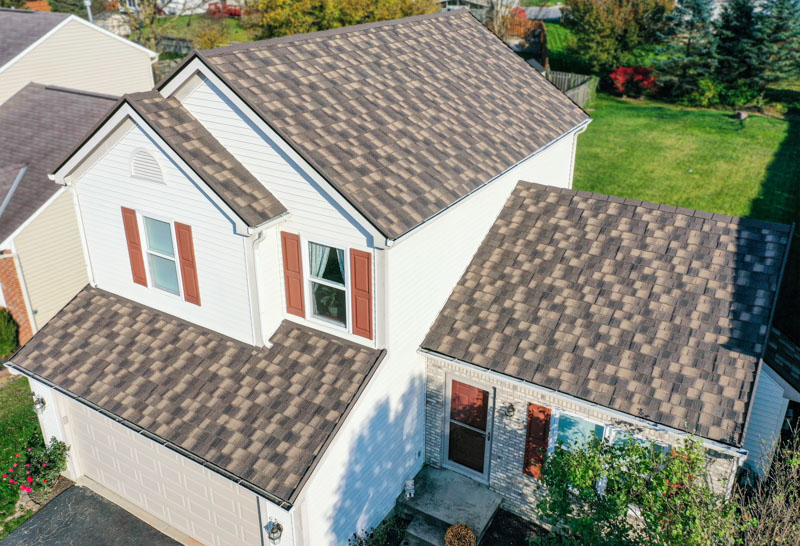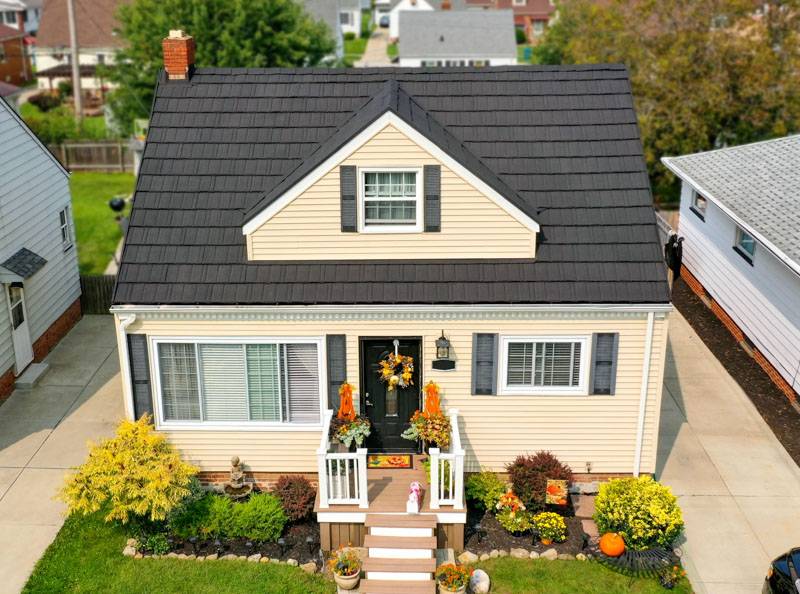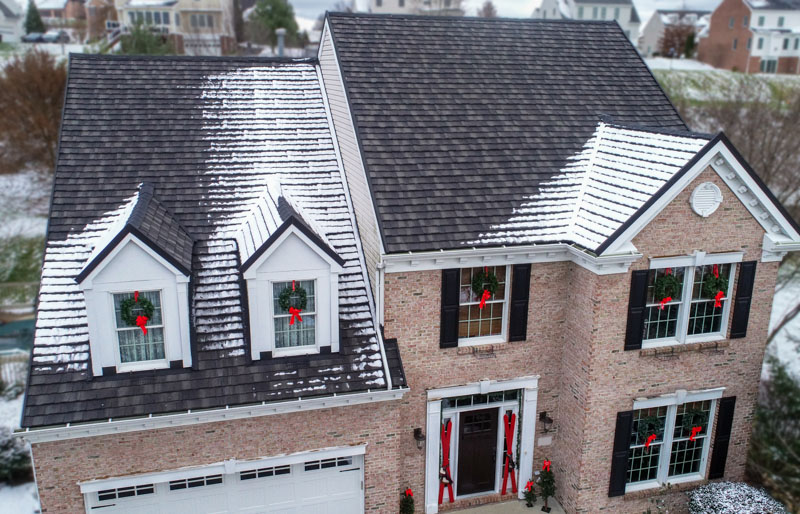If you’re looking to have a brand-new roof installed on your Cincinnati home, there are several variables about your new roofing system that you need to consider. Some of these considerations relate to the appearance of your roof, although others (such as the material you choose) can influence the roof’s durability or lifespan.
One factor that you’ll need to consider is the pitch of your roof. The pitch of your roof, or the angle it’s built at, can impact both its appearance and the functionality of the space. In fact, the pitch of your roof can even determine how well it responds to certain weather conditions. For these reasons, there’s no perfect slope for your roofing system.
So, how can you decide on the best roofing material for the pitch of your roof? This is important to understand before you make the final call on your new roofing system, whether you’re having a metal roof, asphalt shingles, or another roofing material installed.
In This Article
How Is Roofing Pitch Determined?

Roof pitch is expressed as a ratio, and this ratio demonstrates the slope of your new roofing system. It’s possible for a roof to have either a steep or shallow slope, or even be flat on some portions of your home.
When we discuss roofing pitch on your Cincinnati home, we use ratios that reflect its vertical rise over the corresponding horizontal distance. More precisely, this horizontal distance is referred to as the “run.” Writing out pitch, we’re assuming that there’s a run of twelve inches, which means that the final ratio is descriptive of how much the roofing system rises for every twelve inches of its run.
For instance: Maybe the roof in question rises five inches for every twelve inches of run. In this case, the roof has a pitch of 5/12. This ratio can also be written out as “5 in 12,” “5:12,” or “5 over 12.”
Why Is Roofing Pitch So Important?

Even if you understand how to determine and express roofing pitch, you may still be unsure why this variable is so important. Every homeowner should take pitch into account if they’re having a new roofing system installed.
For one, the pitch can determine your roof’s ability to redirect water or moisture. No matter the kind of roofing material you opt for, you don’t want water to build up on your roof’s surface. When moisture isn’t being redirected off of your roof, this can lead to water damage, leaks, and a host of other issues – many of which involve expensive repairs and can even cause serious damage to the inside of your home.
Roofs with a steeper slope are often more effective when it comes to draining water. This can be especially beneficial for homeowners in areas that are prone to heavy rainfall or other types of precipitation.
Also, some roofing materials are better suited to specific pitches. When you’re figuring out the best pitch for your roof, you’ll need to consider the kind of material you’ll be using to construct the final product. Certain roofing materials are specifically designed to be compatible with a roof’s pitch, and special application procedures can be applied, depending on the pitch you go for.
If you’re using a roofing material that’s more prone to damage or maintenance issues, try selecting a pitch with good walkability. Conversely, if your rooftop is incredibly steep, it’s going to be much more difficult to perform repair jobs or projects on the surface.
What Roof Pitches Are Most Common?

Technically speaking, it’s possible to have a roof installed that has just about any pitch – of course, you’ll need to use a material that’s compatible with the pitch you select. Still, there are certain pitches that are more common than others.
You’ll find that most roofs have pitches between 4:12 and 9:12. If a roof has a slope of less than 4:12, it will have a very slight angle and is referred to as a low-slope roof. But if the roof has a slope of 2:12 or less, then this is considered a flat roof, and it will have little to no visible slope.
On the opposite side of the spectrum, roofing systems that have a pitch of 9:12 or greater are steep-slope roofs. These roofs have a more extreme angle than those with a lower pitch ratio.
What Pitch Limitations Do Certain Roofing Materials Have?
As we mentioned earlier, certain roofing materials are better suited to particular pitches. These limitations are essential to take into account, especially when you’re deciding on the material you’d like for your new Cincinnati Ohio roofing system.
Some materials aren’t the best if you’re looking to install a roof with an extreme pitch — whether it means extremely low or extremely high. A common example would be asphalt shingles, which are one of the most common roofing materials for homeowners. If you have a flat or low-slope roof, this could make it much easier for moisture to become trapped in your shingles. This can result in leaks and serious roofing damage. To keep your roof protected from water damage, only use asphalt shingles on a moderate or steeper slope.
Conversely, there are roofing materials that are better suited to low-slope roofs, such as rubber membranes or tar-and-gravel. If your roof has a steep slope, then either of these materials would be difficult to install. Plus, the final product would be aesthetically undesirable for most homeowners, as the unattractive materials would be on full display.
Roof Pitch and Climate

From aesthetics to durability and beyond, roofing pitch matters. Before having a brand-new roofing system installed, you’ll need to put thought into the most appropriate roofing material depending on the pitch of your Cincinnati roof. If you’re ever uncertain, it’s a good idea to speak with a professional roofer – they’ll be able to consider the climate, the structure of your property, and your preferences before determining the best roof for your situation. Just remember, every home is different, so it’s crucial that you consider your unique needs.
